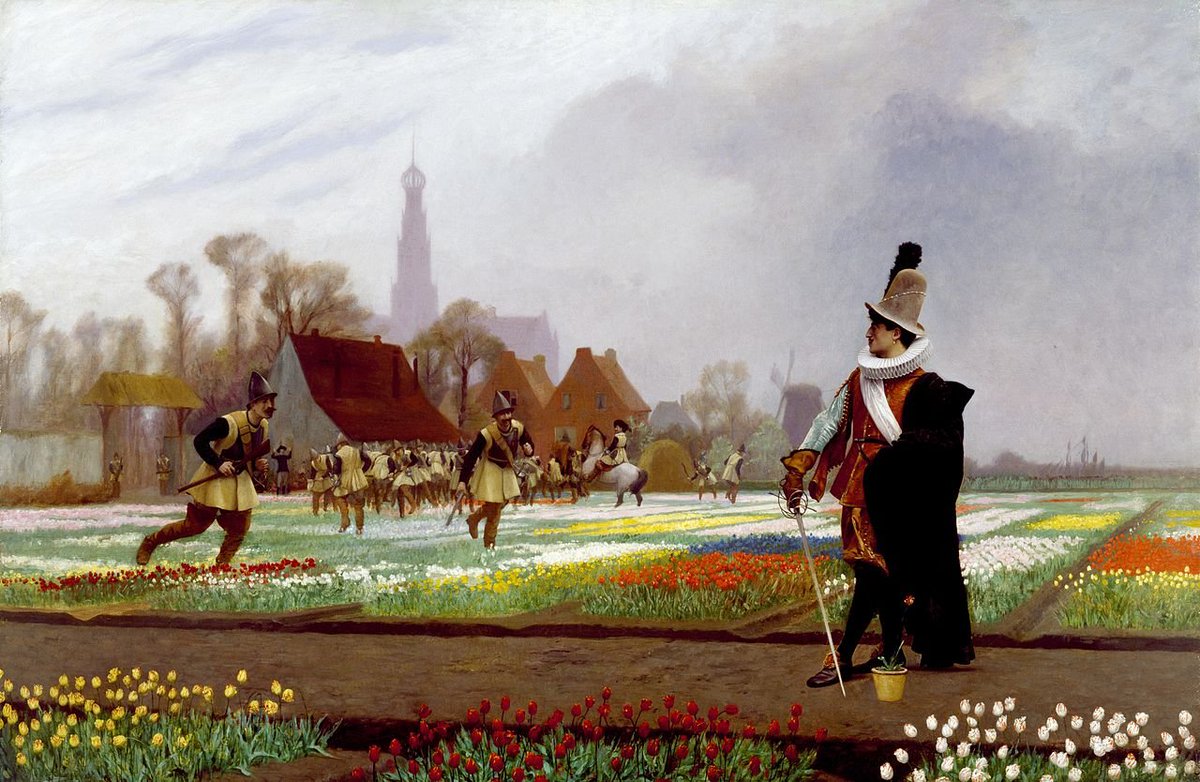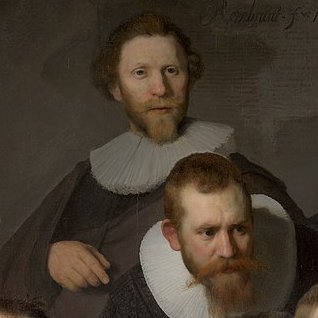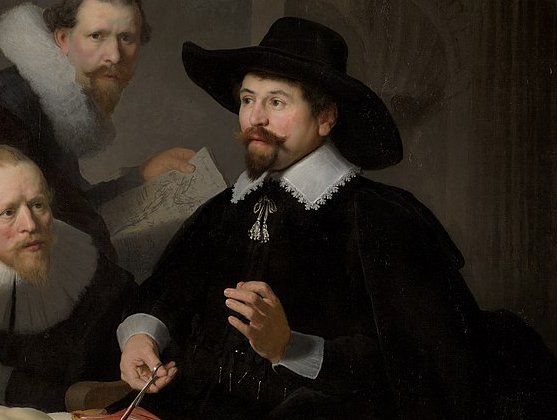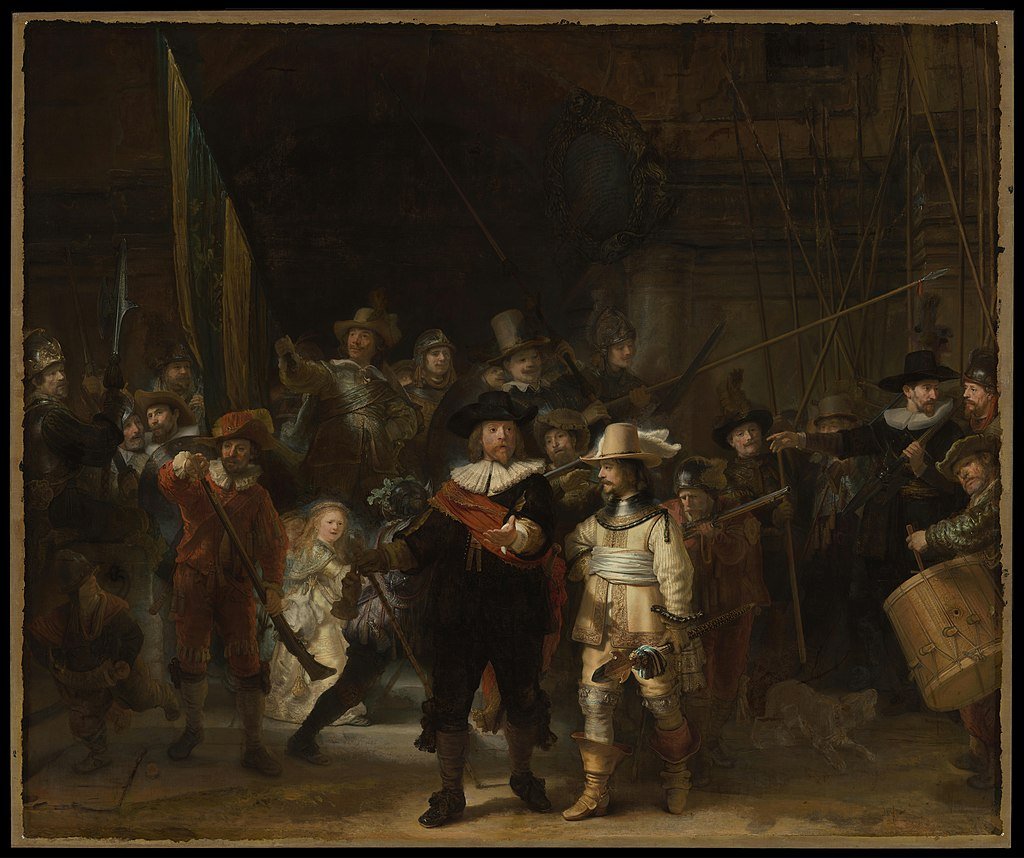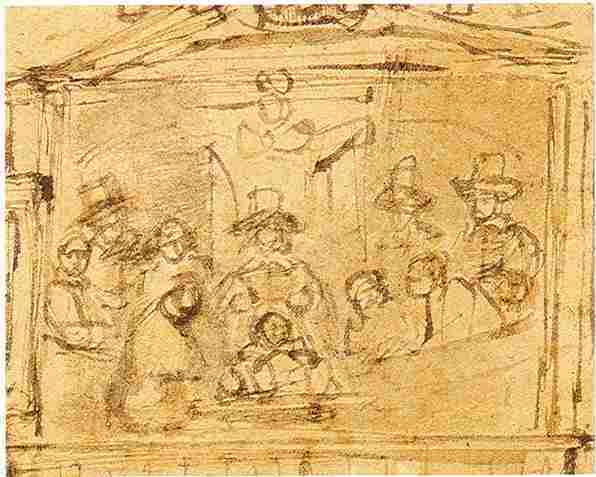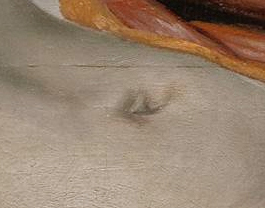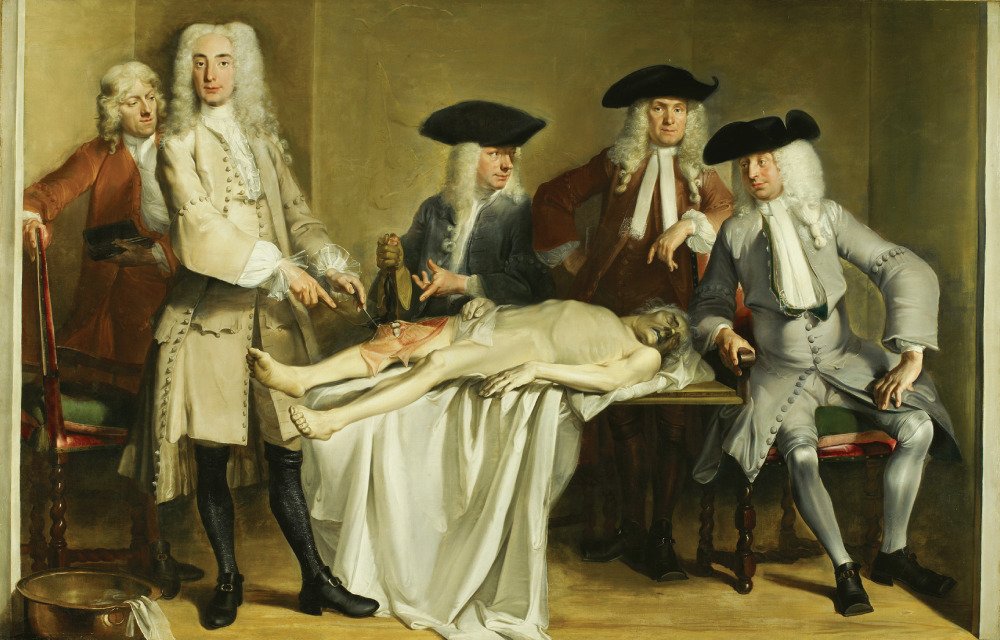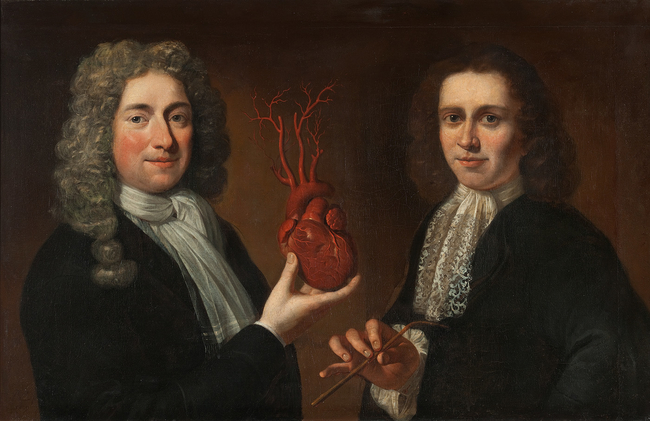Seriously.
My fave secret of all those Renaissance-era painters? They would coat cloth in in plaster, fold it into the shapes they needed reference for, and then let it dry and harden so they could paint that particular fold of cloth just right FOREVER. https://twitter.com/TinyLuri/status/1327700097900060672
My fave secret of all those Renaissance-era painters? They would coat cloth in in plaster, fold it into the shapes they needed reference for, and then let it dry and harden so they could paint that particular fold of cloth just right FOREVER. https://twitter.com/TinyLuri/status/1327700097900060672
Another fun story: When Rembrandt died, a buyer that went to his home hoping to sell on objects from his estate, & found MULTIPLE SEVERED/FLAYED HUMAN LIMBS floating in jars of alcohol in his studio.
Rembrandt had a pretty serious in with the surgeon's guild, after all.
Rembrandt had a pretty serious in with the surgeon's guild, after all.
Maybe y'all don't know about that? It's a helluva story.
Rembrandt, was a dropout, and thus an immense disappointment to his upper-class, miller parents when he quit school to move to Amsterdam to try and make this whole PAINTING thing work.
Rembrandt, was a dropout, and thus an immense disappointment to his upper-class, miller parents when he quit school to move to Amsterdam to try and make this whole PAINTING thing work.
Nicolaes Tulp was not his birth name; "Tulp," y'see, is Dutch for "tulip."
And around the time Nicolaes was beginning to practice medicine in Amsterdam- also, coincidentally, the time The Netherlands had the highest per-capita income in the WORLD- a strange thing was happening.
And around the time Nicolaes was beginning to practice medicine in Amsterdam- also, coincidentally, the time The Netherlands had the highest per-capita income in the WORLD- a strange thing was happening.
Tulip MANIA. The first recorded speculation bubble in HISTORY.
I won't get into it now, but if it's new to you, it's worth reading about.
Suffice to say, Nico deciding on "Dr. Tulip" was like a modern doctor choosing "Dr. Tesla." Flashy, attention-grabbing, upper-class aimed.
I won't get into it now, but if it's new to you, it's worth reading about.
Suffice to say, Nico deciding on "Dr. Tulip" was like a modern doctor choosing "Dr. Tesla." Flashy, attention-grabbing, upper-class aimed.
Nico was a social-climber/natural schemer type. He had big plans for himself, mainly based around increasing his personal profile. But here's the problem:
Back then, doctors weren't considered particularly classy. Especially not SURGEONS.
Back then, doctors weren't considered particularly classy. Especially not SURGEONS.
They had a guild, sure, but so did tallow renderers, dyers, coppersmiths. Surgeon's guilds weren't seen as superior. I mean, those people messed around with GUTS. Like BUTCHERS. EW. And was it really all that long ago they were also barbers on the side? Pft.
But Dr. Tulp knew of a way the surgeons of Amsterdam could set themselves apart.
COMMISSIONING A PORTRAIT.
And he just so happened to hear of a young-and-talented artist who probably wouldn't cost too much.
COMMISSIONING A PORTRAIT.
And he just so happened to hear of a young-and-talented artist who probably wouldn't cost too much.
Enter what is considered by many the first, great masterpiece of Rembrandt: "The Anatomy Lesson of Dr. Nicolaes Tulp." 1632.
Here we see Dr. Tulp carefully explaining the dissected forearm anatomy of an unlucky criminals' cadaver, lifting out the ligaments that control the fingers with one hand, and demonstrating what they anatomically do with his other hand (move the fingers) for a rapt audience.
The audience (other members of the surgeons' guild, who would have paid to be included) is made to regard Tulp as a master of his craft, with most staring in awe.
However, some of the surgeons are looking at US.
However, some of the surgeons are looking at US.
Most interestingly, this surgeon isn't only looking at us, but pointing at the cadaver as he does so, making this piece more than just another commissioned portrait of surgeons, but a memento mori.
"You shall be as he is, one day. All who live, die."
"You shall be as he is, one day. All who live, die."
And keep in mind, what would make this even more profound? This was no anonymous cadaver. This was a real subject of dissection taken apart in Amsterdam's public dissection theaters for a paying audience, Adriaan Adriaanszoon, hanged for the theft of a coat.
Yeah, you heard. Paying audience.
Rembrandt has introduce a level of artifice, here; Adriaan would have be dissected for a crowd of ticket-holding laypeople, not just a handful of surgeons.
Some folks even had season passes. Public dissections were VERY popular, once.
Rembrandt has introduce a level of artifice, here; Adriaan would have be dissected for a crowd of ticket-holding laypeople, not just a handful of surgeons.
Some folks even had season passes. Public dissections were VERY popular, once.
But Rembrandt still acknowledges the presence of the off-camera dissection theater audience, by turning the viewers of the painting into that audience; the glances from the surgeons, even Dr. Tulp himself staring off into the presumed crowd as he explains anatomy.
Anyway, this painting was a big, BIG hit. It was more than just a vanity piece for a bunch of surgeons, all crammed in together and staring at at the viewer like a traditional work of portraiture.
(sorry, Mr. Mierevelt.)
(sorry, Mr. Mierevelt.)
It was something that could be appreciated by just about anyone who saw it. It transcended a mere private commission, and became ART.
This painting pretty much put Rembrandt on a rocketship, popularity-wise. so really, Tulp's plan worked like a charm.
This painting pretty much put Rembrandt on a rocketship, popularity-wise. so really, Tulp's plan worked like a charm.
Rembrandt would be commissioned by other guilds (like, oh, I dunno, the Amsterdam civic militia, maybe) not long after, doubtlessly aware of the naturalistic, noble flair he lent to his figures, and wanting that for themselves.
And later artists commissioned by the surgeon's guild would look to the painting of Tulp and his colleagues for inspiration (or, also likely, were instructed by later surgeons to mimic it closely), right down to the Christ-like glow of the corpse and the gestures of the hands.
Rembrandt hismelf would do another notable surgeon's guild commission, "The Anatomy Lesson of Dr. Deijman," in 1656, most of which would burn in a fire in 1723, cuz everything fucking sucks, I guess.
(Here's a preparatory sketch for it that survived, and an utterly amazing, VERY theoretical digital reconstruction, that just makes me sadder the original burned.)
(That dude super-casually holding the skullcap. I love it. Hannibal Lecter shit. Cenobite shit. Chef kiss. Amazing.)
Anyway, parting shot.
Rembrandt signed "The Anatomy Lesson of Dr. Nicolaes Tulp" with a R in the cadaver's navel.
Rembrandt signed "The Anatomy Lesson of Dr. Nicolaes Tulp" with a R in the cadaver's navel.

 Read on Twitter
Read on Twitter

